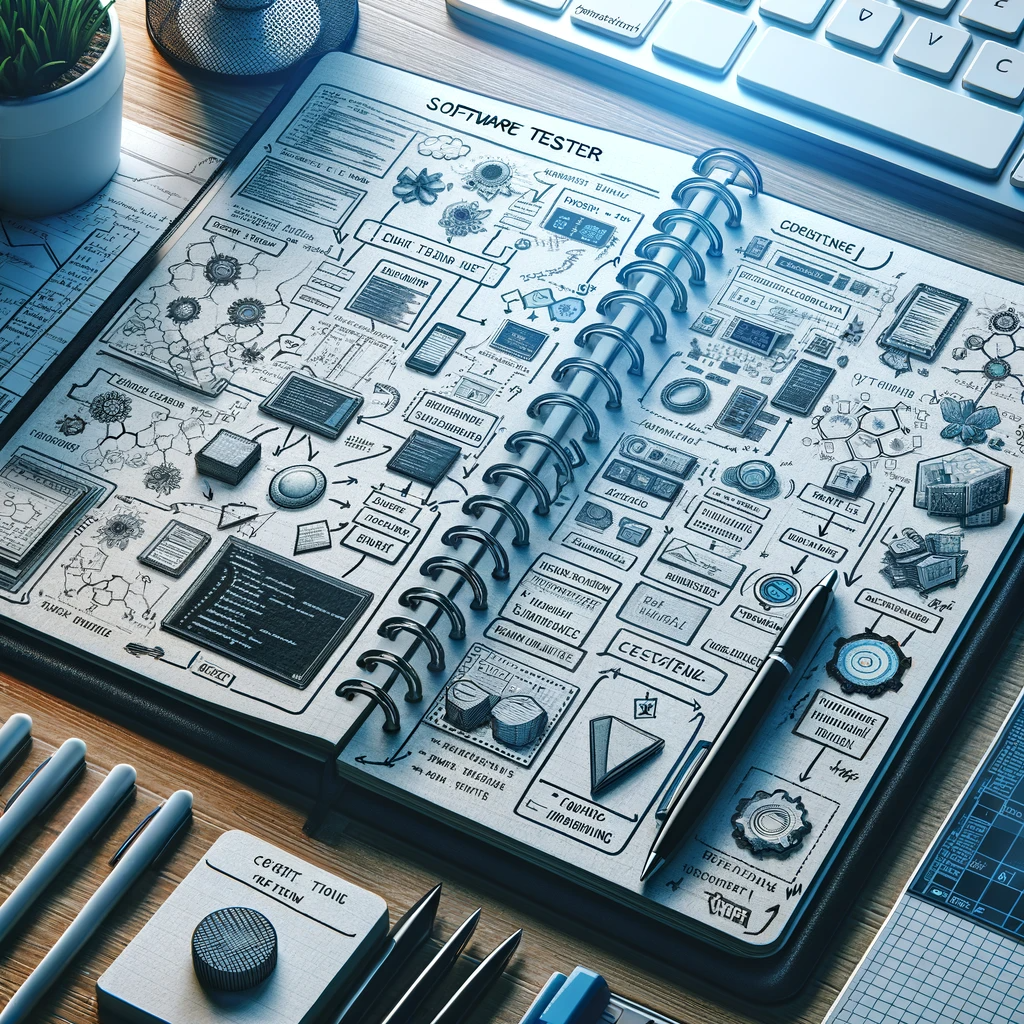
Unleashing the Power of a Second Brain in Software Testing
As a software tester, have you ever found yourself in a whirlwind of repetitive explanations, forgotten solutions, or emergency fixes that could have been a breeze with the right information at hand? Imagine having a “second brain,” a personal repository of knowledge and experiences that grows with you throughout your career.

Why a Second Brain?
In software testing, the complexity and diversity of tasks can be overwhelming. Whether it’s walking someone through a process that should have been documented, re-explaining steps, being the sole bearer of project knowledge, or forgetting crucial details of a task revisited after months, the challenges are real. Beyond personal frustration, this scenario affects team efficiency and project success.
The second brain concept isn’t just about creating a repository of notes; it’s about building an extension of your professional self. This personal knowledge base becomes a powerhouse of information, accessible and invaluable, especially in critical times.
Documentation as a Lifeline
Imagine being called for an emergency fix. Instead of panic, you turn to your second brain. There, you find detailed notes on similar past incidents, steps taken, and solutions devised. This immediate access to your own distilled wisdom can be the difference between a swift resolution and a prolonged ordeal.
Institutional Knowledge at Your Fingertips
Often, the nuances of an organization’s systems and processes are learned through trial and error, sometimes too late in one’s career. A second brain accelerates this learning curve. It’s not just about what you’ve learned, but about capturing the why and how — the nuances that turn information into understanding.
Overcoming the “Only Person Syndrome”
Being the only one who knows how a system or project works can be a risky bottleneck. By documenting your knowledge, you’re not just helping yourself, but you’re enabling your team. This shared knowledge fosters collaboration and mitigates the risk of knowledge loss due to personnel changes.
Crafting Your Second Brain: Practical Strategies for Software Testers
Building a second brain is a journey of personal and professional growth. It’s about curating a collection of insights, experiences, and knowledge in a way that amplifies your expertise as a tester. Here are some strategies to effectively create and nurture your second brain.
1 Choose Your Tools Wisely: The foundation of your second brain is the tool or platform you choose for documentation.
Whether it’s a digital notebook, a project management tool, or a specialized software testing tool, the key is ease of use and accessibility. Your tool should allow you to quickly jot down notes, categorize them, and retrieve information effortlessly. Consider features like tagging, searching, and cross-referencing to keep your notes organized and interconnected.
2 Cultivate the Habit of Regular Documentation: The most powerful second brain is the one that’s consistently updated.
Make it a habit to document new learnings, solutions to problems, and reflections on completed tasks. This doesn’t mean writing extensive reports; even brief, bullet-point notes can be incredibly valuable. The goal is to capture the essence of your experiences in a way that’s meaningful and useful for future reference.
3 Reflect and Revise: Your second brain is a living entity. Regularly review and update your notes.
This reflection not only reinforces your learnings but also allows you to refine and expand your documentation with fresh insights or additional details. As you grow in your role, so will the depth and breadth of your second brain.
4 Share and Collaborate: While the second brain is personal, its true power is unleashed when shared.
Collaborate with colleagues by sharing relevant parts of your documentation. This fosters a culture of knowledge sharing and collective growth, turning individual insights into team-wide assets.
5 Integrate with Daily Workflows: Integrate your second brain into your daily workflows.
Use it as a reference in meetings, during testing sessions, and when planning projects. This integration ensures that your second brain is not just a passive repository but an active tool in your professional toolkit.

The Transformative Impact on Testing Careers
Adopting the second brain approach can have a transformative impact on your career as a software tester. It elevates your role from a task executor to a knowledge custodian. This shift not only enhances your own efficiency and effectiveness but also positions you as a valuable asset to your team and organization. This is how:
- Enhanced Problem-Solving Skills: With a rich repository of past experiences and solutions, you become adept at tackling complex testing challenges with confidence and creativity.
- Accelerated Learning and Growth: Continuous documentation accelerates learning, helping you quickly assimilate new tools, techniques, and methodologies.
- Increased Value and Influence: As your second brain grows, so does your value within the team. You become a go-to resource, influencing decisions and driving best practices in software testing.
- Resilience to Change: In an industry where technologies and methodologies evolve rapidly, your second brain becomes a stabilizing force, helping you adapt and thrive amidst change.
Building a second brain is more than just a documentation practice; it’s a mindset shift. It’s about seeing yourself not just as a tester, but as a perpetual learner, a problem solver, and a knowledge sharer. Embrace this approach, and watch as it profoundly shapes your career and the way you contribute to the field of software testing.
Nurturing Your Second Brain: Beyond the Basics
As you progress in your journey with your second brain, it’s important to go beyond just collecting notes. It’s about deepening your understanding and expanding the horizons of your knowledge. Here are some advanced strategies to enhance your second brain.
Interlinking Concepts and Ideas
Start connecting different notes and concepts. This not only helps in organizing information but also in understanding how different aspects of software testing are interrelated. For instance, linking a bug you encountered with a specific testing methodology can provide insights into best practices and potential pitfalls.
Incorporating Feedback and Learnings
Integrate feedback from peers, supervisors, and even your own self-assessments. Reflecting on feedback and incorporating it into your second brain turns it into a dynamic tool for continuous improvement.
Exploring Beyond Your Domain
Don’t limit your second brain to just your immediate tasks and responsibilities. Explore related areas like software development, user experience, and project management. This broader perspective enriches your approach to testing and problem-solving.
Using Visualization Techniques
Incorporate diagrams, flowcharts, and other visualization techniques. They can help in breaking down complex testing processes and making them more comprehensible. Visual aids are particularly useful when revisiting notes after a long period.
Keeping Up with Industry Trends
Stay updated with the latest trends and advancements in software testing. Add summaries, reflections, or even your opinions on new methodologies, tools, or best practices. This ensures your second brain is not just a historical record but a relevant, up-to-date resource.
Emphasizing Soft Skills and Communication
Document experiences and learnings related to soft skills like communication, teamwork, and problem-solving. These skills are as crucial as technical knowledge in shaping a successful testing career.
Regular Cleanup and Organization
Periodically review and organize your second brain. This helps in removing outdated information, consolidating notes, and keeping the system efficient and user-friendly.
Conclusion
Your second brain is not just a tool; it’s a lifelong companion in your journey as a software tester. It encapsulates your growth, experiences, and evolving expertise. By continuously nurturing and relying on it, you’ll find yourself more prepared, more insightful, and more impactful in your role.
Embrace this journey of building and nurturing your second brain. Let it be your guide and mentor as you navigate the ever-changing landscapes of software testing. As you do, you’ll find that this approach doesn’t just make you a better tester; it makes you a more complete professional, ready to take on the challenges and opportunities that lie ahead in your career.
